People who convey voices from the sea
People who convey voices from the sea
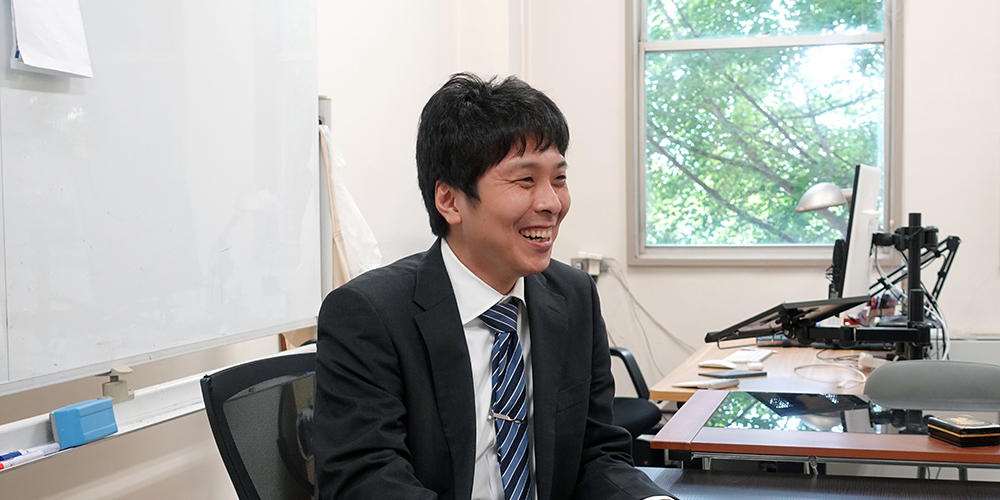
Thoughts on geothermal power generation research guided by people
Faculty of Ocean Engineering Department of Marine Electronics and Mechanical Engineering Associate Professor Motoaki Morita
People guided me,
Thoughts on geothermal power generation research
Faculty of Ocean Engineering Department of Marine Electronics and Mechanical Engineering Associate Professor Motoaki Morita

Biography
Motoaki Morita(Motoaki Morita)
Academic Assembly Department of Marine Electronics and Mechanical Engineering Associate Professor
Graduated from the Faculty of Engineering, Yokohama National University, completed the doctoral program at the Graduate School of Engineering,
Obtained doctorate in engineering in 2012.
National Institute for Materials Science Research Associate,
Graduate School of Engineering, Yokohama National University Research Fellow and
After working as a research fellow at the Japan Society for the Promotion of Science,
In 2012, he became an assistant professor at the Faculty of Ocean Engineering, Tokyo University of Marine Science and Technology.
Since 2018, Associate Professor at Tokyo University of Marine Science and Technology.
Motoaki Morita(Motoaki Morita)
Academic Research Faculty Division of Marine Electronics and Mechanical Engineering
Associate professor
Graduated from the Faculty of Engineering, Yokohama National University, completed the doctoral program at the Graduate School of Engineering,
Obtained doctorate in engineering in 2012.
National Institute for Materials Science
research clerk,
Graduate School of Engineering, Yokohama National University
Graduate School of Engineering Postdoctoral Fellow and
Japan Society for the Promotion of Science
After working as a special researcher,
In 2012, he became an assistant professor at the Faculty of Ocean Engineering, Tokyo University of Marine Science and Technology.
Since 2018, Faculty of Marine Science and Technology, Tokyo University of Marine Science and Technology
Associate Professor.
- Q What department do you belong to?
↓
- The Department of Marine Electronics and Mechanical Engineering conducts research and development on ship machinery and trains sailors.Since ships are complete systems, there are a wide range of fields that need to be learned, requiring both general mechanical and electrical knowledge.This department brings together experts in various fields such as metal materials, equipment such as engines, and information communication.
There is a lot to learn, so it can be confusing at times, but don't worry.There are some difficult aspects, but you will be able to acquire a wide range of knowledge, so you should be able to think that it was good to do it later.Since the class is small, the distance between the students and the teachers is close, and after entering the school, the teachers will carefully teach you about basic education.In my laboratory, I try to teach specialized content as carefully as possible.
In addition, students who enter the university through the AO entrance examination have a pre-enrollment education, and they have the opportunity to study mathematics, physics, and bob博彩公司_申博体育在线-投注*官网 before entering the university after passing the entrance examination.
In this department, you can learn about group life through practical training on board ships, and you can actually see, touch, and operate ships.In the case of material research, I can understand exactly what and where the material is used on board, and my learning efficiency is high.
While there are many people who use actual machines for the first time after becoming a member of society, being able to experience it first is a big advantage.In addition, through group life, you will acquire etiquette and communication skills.It seems that many students realize how grateful they are when they are looking for a job.Unlike students from other universities, Marine University students are able to tell people about their actual experiences, and one of the characteristics is that they are able to greet people properly.
In terms of research, there are faculty members with advanced expertise in each field, and many students go on to graduate school to acquire specialized expertise in that field and find employment using their expertise. - Q What kind of classes do you teach?
↓
- I am in charge of short boat practical training (Department of Marine Electronics and Mechanical Engineering, 1st year), metallic materials science (Department of Marine Electronics and Mechanical Engineering, 2nd year), and electromechanical engineering experiments (Department of Marine Electronics and Mechanical Engineering, 3rd year).
To explain in detail about metal materials science, metal materials include materials such as iron (steel), aluminum, and titanium. .For example, in the case of automobiles, the iron (steel) used for the frame is designed to be strong, and the iron (steel) used for the outer panels is designed to be easy to process.In addition, the material commonly called stainless steel is officially called stainless steel, which is iron (steel) designed to be resistant to rust.There is an image that iron (steel) is easy to rust, but it is possible to design it to be resistant to corrosion.As a method to change the properties, adding a very small amount of elements, or cooling or heating, can greatly change the properties of the metal, so this is used.It's kind of like cooking.The same thing happens with metals, where the taste changes greatly depending on the amount of salt or heat.In the case of iron (steel), the strength may be more than doubled if 0.1% by weight of carbon is contained in the iron compared to 0.4% by weight.Looking at the photos of the surface structure (in the text, below), you can see the difference due to the content rate.The parts that look black are hard, and the parts that look white are soft.For example, the 2% one (Fe-0.8%C in the photo), which has many black parts, is used for piano wires that require strength.Strictly speaking, this black part has a striped pattern when enlarged, and is called perlite structure.
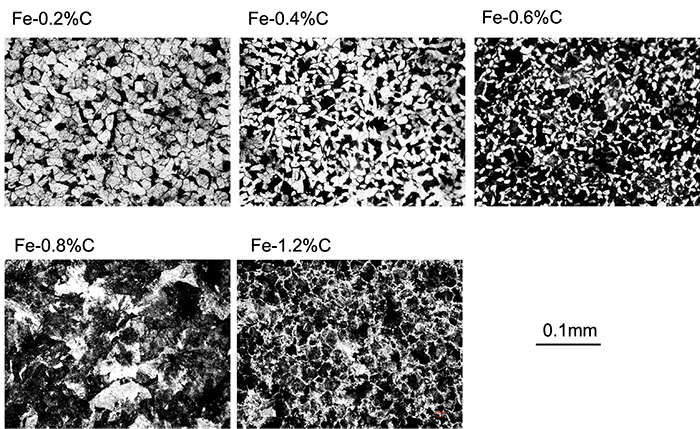
Photograph of the surface structure of carbon steel: Microscopic appearance changes with a slight change in carbon content (unit: mass%)
Many metal materials, mainly iron (steel), are used in ships.By knowing how much elements are contained and what kind of processing is done, you can select the optimum material for the place you want to apply.Conversely, making the wrong choice can lead to a serious accident.The purpose of this class is to help students acquire the knowledge necessary for micro/nano design of metallic materials to prevent such situations.In experiments, I learned about observation methods for micro/nano design, and recently I have also used image recognition technology.This is an attempt to have a computer determine micro/nano-order structures.By the way, in the short boat practice I am in charge of, I will go back and forth between Odaiba's Rainbow Bridge and the campus pond.It will be very tiring, but I think that unity will be born because teamwork is necessary. - Q What kind of research are you doing?What do you find interesting about that research?
↓
- We are mainly researching the development of materials that contribute to the expansion of geothermal power generation and introduction.Geothermal power generation involves the accumulation of seawater and rainwater deep underground, where the water is heated by magma to a state of high temperature and pressure, which is extracted above ground. system.The extracted water is returned underground and can be used continuously as renewable energy through this cycle.The problem with geothermal power generation is scale.■(limescale) formation.The scale builds up on the pipes, narrowing the water passage, reducing the amount of water taken out and returned, and reducing the amount of power generated.
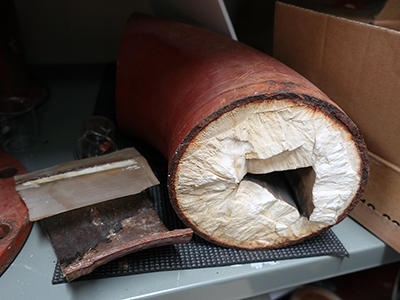
Actual piping of a geothermal power plant clogged with scale
Injection of chemicals has been considered for scale control, but I am thinking of using methods that do not use chemicals as much as possible in consideration of the environment and the application of environment-friendly chemicals.In my laboratory, we are conducting research on deposited scale substances and how scale adheres to surfaces.In addition, since the characteristics of the scale deposited in the laboratory and on-site are different, my goal is to simulate the on-site environment in the laboratory.We believe that if we can reproduce it in the laboratory, the speed of research and development will increase.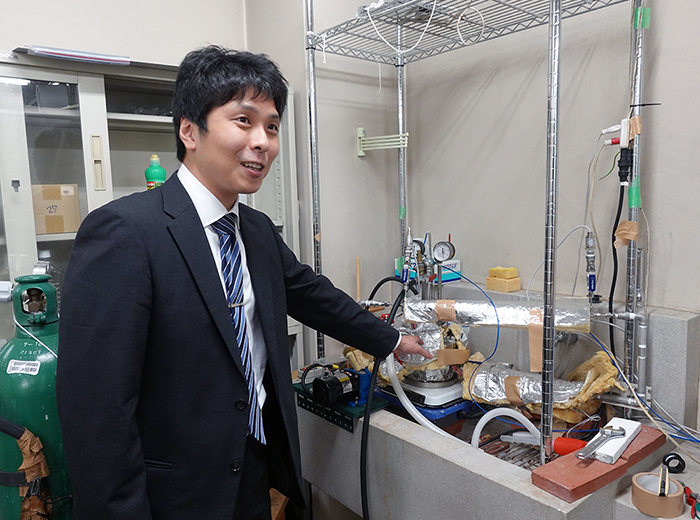
world's first!A device that can simulate the local scale in the laboratory
In the same way, hot springs that use high-temperature water extracted from the ground may also experience similar clogging of pipes.In the case of hot springs, it is not called scale but called "Yunohana", but recently, due to the aging of the people who run hot springs and the lack of manpower, it is difficult to clean the pipes (remove the Yunohana). I believe that this is also a necessary research.What is interesting about this research is that although hot springs and yunohana have been known in Japan for a long time, the adhesion mechanism is still unclear.I was told that research was useless because the quality of the springs differs depending on the region where I observe them. .However, as I proceeded with my research for a long time, I came to see some rules.Recently, I have been researching what substances adhere to the surface first.Through this research, I feel a sense of accomplishment when I first learn something that no one else knows.In addition, field tests for this research are often conducted in hot spring areas such as Unzen, Yufuin, and Atagawa, and one of my pleasures is bathing in the hot springs.
Scale: High-temperature, high-pressure water accumulated deep underground is surrounded by minerals, and the minerals dissolve into the water.When this water is taken out to the ground, the temperature and pressure decrease, and the solubility of water decreases.It is also called "Yunohana" in hot spring areas.
- Q What inspired you to do this research?
↓
- After the Great East Japan Earthquake in 2011, I thought that research and development of geothermal power generation was necessary for Japan, which has the third largest geothermal potential in the world. started the challenge.At that time, there was an open call for proposals for a national research and development project called the Geothermal Power Generation Technology Research and Development Project.I was still in my twenties, so everything about being in charge of a national project as a representative researcher was exciting and refreshing. did not reachI felt a sense of responsibility for that, and at the time I thought it would be difficult to complete the research and development and pursue it academically. rice field.While I was feeling that way, I was asked to give a lecture by people in the hot spring area where the field test was being conducted. So, I was asked by name to continue the research at a venue of more than 20 people, and I decided that I could not betray it, so I decided to continue the research.I thought it would be difficult to pursue research, but I changed my way of thinking by making use of my experience in a national project and continued my research, which is progressing well.I also feel that it is important to recreate the local environment in the laboratory, and this is also connected to my current research.
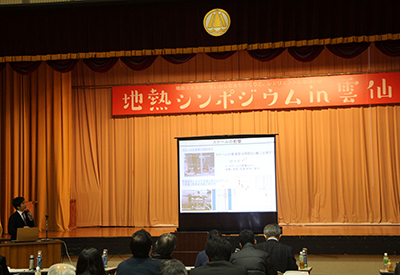
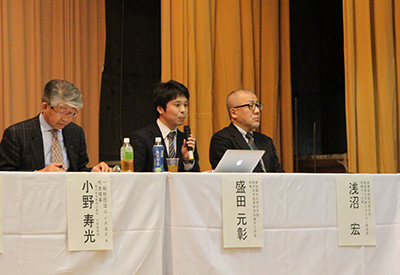
Lecture: Geothermal Symposium in Unzen - Q What number of SDGs is your research related to?
↓
- "No. 7 Energy for everyone and clean".The expansion of the introduction of geothermal power generation as renewable energy.Since geothermal power plants are located far from urban areas, we believe that geothermal power generation is effective in diversifying risks, such as as an emergency power source in the event of a disaster.The heat source of geothermal power generation also leads to securing drinking water.In addition, it is said that if we can realize supercritical geothermal power generation using supercritical water, which is currently being researched and developed in Japan, the amount of power generated will change dramatically.In order to proceed with this research, it is necessary to understand the mechanism of geothermal power plants, so it will lead to work not only at water treatment manufacturers but also at plant manufacturers and material manufacturers.In fact, we are currently working with a company to develop a heat exchanger that can be used for geothermal power generation.In order to achieve this, there are various issues that we are working on.In addition, I think that it is related to "No. 8: Decent work and economic growth," "No. 9: Build a foundation for industry and technological innovation," and "No. 17: Partnerships to achieve goals." Numbers 8 and 9 are related to regional revitalization.And I especially value the number 17 partnership.We can't do field testing and sample collection without a partner.I believe that I have been able to continue my research up to this point because of the connections I have with people.
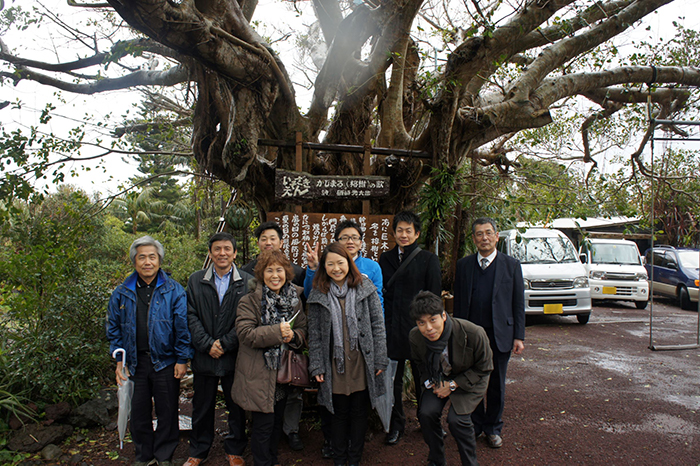
Visiting a geothermal power plant with people from a hot spring area
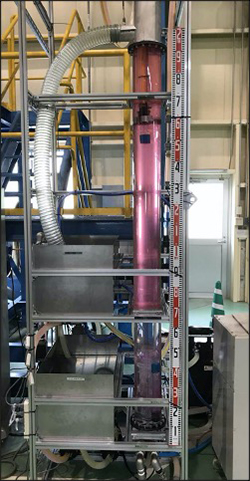
An experiment on a heat exchanger that can reduce the effects of scale under research and development - Q What are your future goals as a researcher?
↓
- My future goal as a researcher is to nurture future generations.In order to realize a sustainable society, we need human resources who can connect our research to the future.In order to sustain it, it is necessary to develop human resources who will connect us to the future.I believe that it is better not to leave the content of my research as it is, and that it is necessary to develop human resources who can create some kind of innovation.While I am doing research, I would like to be able to produce my own research and develop human resources who can inspire me.I myself am interested in various things, and rather than continuing to do the same research, I would like to pursue new things that I find interesting in my research.Through the joint research I am currently conducting with companies, I am able to pursue new things, and I would like to nurture them.There was a time when I wondered if my research method of tackling new things one after another was really the right thing to do.At that time, a professor who had the same problem when he was young asked a question to a Nobel Prize-winning professor at a lecture, and was encouraged by his words, "If it's important and interesting research, anything is fine." I realized that it is okay to go forward with my own style.
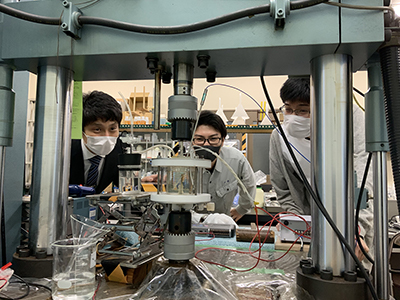
Durability evaluation experiment of metal materials with students - Q: Looking ahead to 2030, what kind of research would you like to do with incoming students?
↓
- I believe that research should be done spontaneously like a hobby, and I would like to continue setting attractive research themes. My goal for 2030 is to put geothermal power generation into practical use.And I have a strong desire to continue beyond 2030, rather than ending in 2030.When I look back now, I think that I was chosen as the research representative of the national project because I had just graduated from graduate school, so I trusted myself and entrusted me with it. I feel that I have been able to carry out my research up to this point because of people who have guided and connected me.There are many situations in research that cannot be achieved by one's own ability alone.I would like to do research that can contribute to society by giving back to the people who have helped me.

With a student during the test piece immersion test (2013)
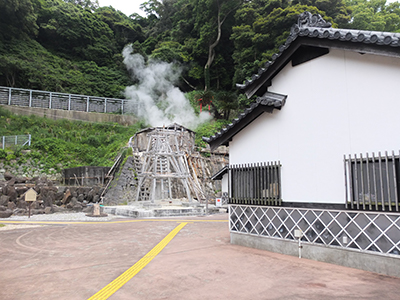
The hot water storage tank at Yudayu Honda's residence where the immersion test was conducted (Obama Onsen, Unzen City)
A yudayu is a person in a position similar to that of a lord who is in charge of the hot springs.
(https://www.youtube.com/watch?v=HLxJZ-m4mfI)








